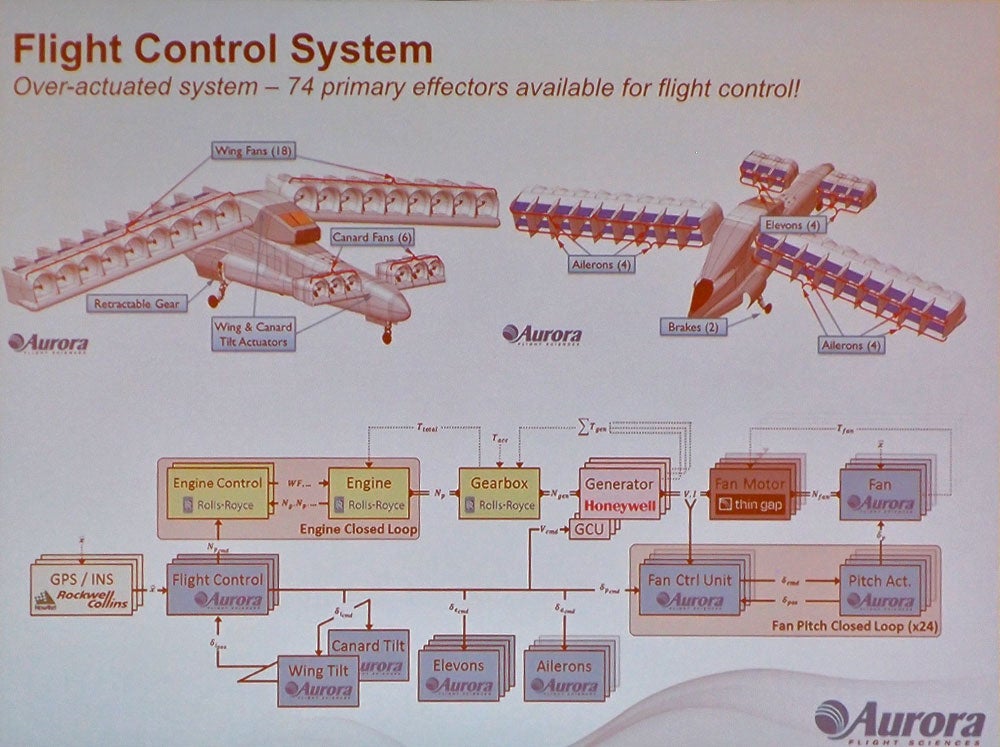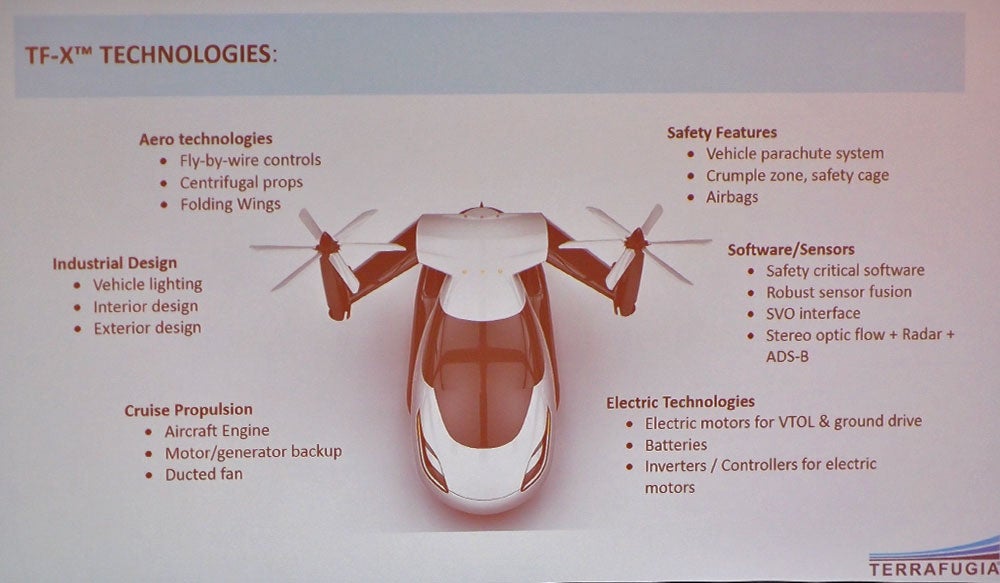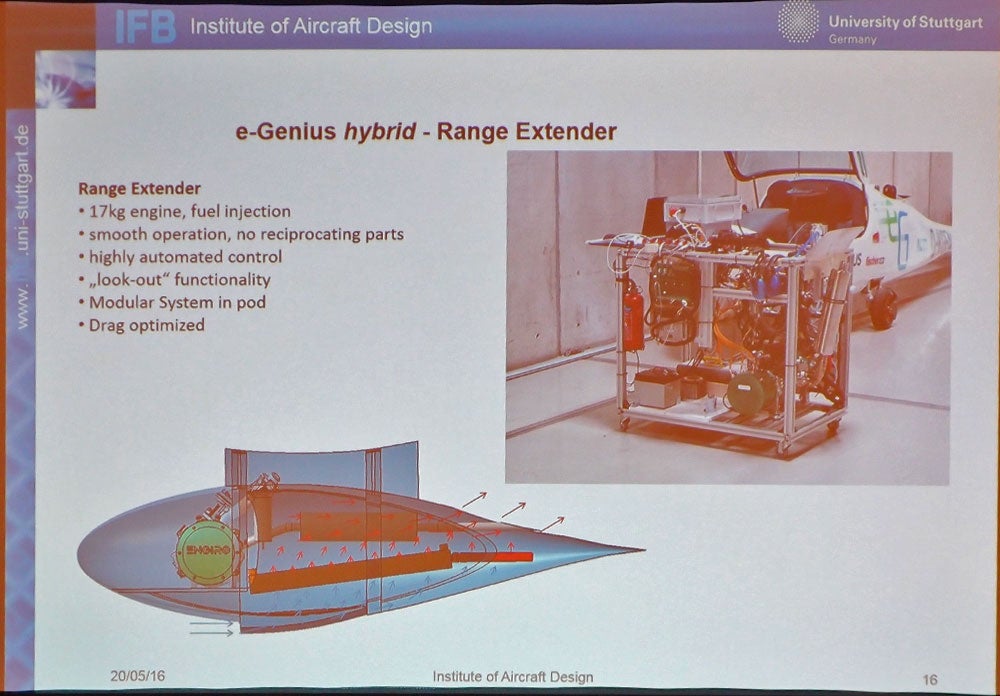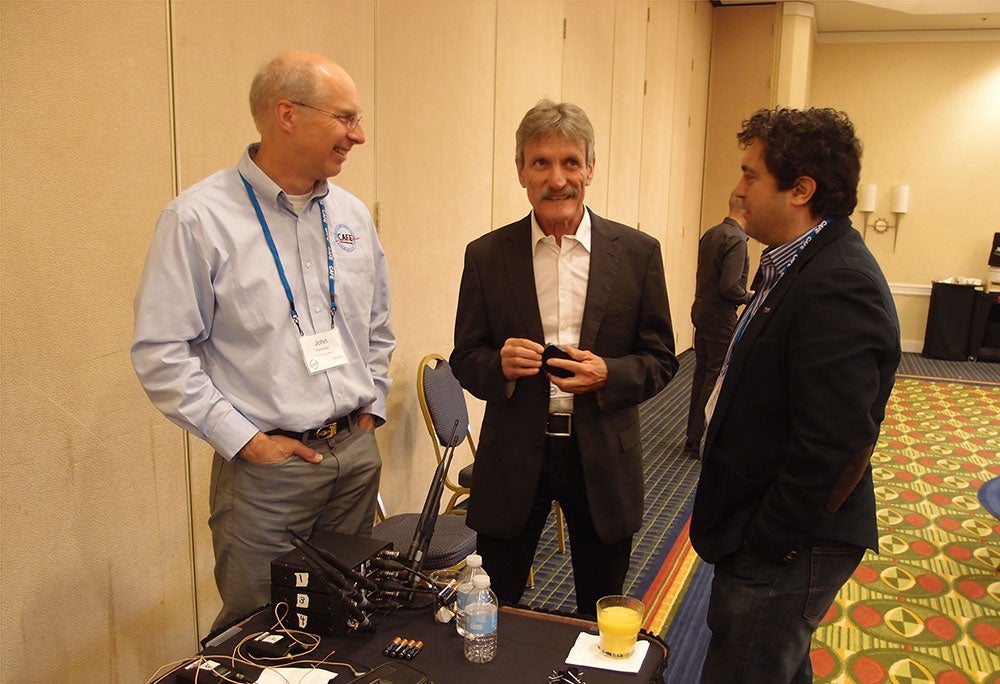
John Langford: Aurora Flight Sciences and the Lightning Strike
Dr. Langford opened the second day with background on strides his firm has made in creating an unpiloted vertical takeoff and landing machine. The Lightning Strike is a 10,000 to 12,000 pound, high-speed craft with a turbine from partner Rolls-Royce and triple generators from partner Honeywell, all driving 18 wing-mounted and six canard-mounted electric, variable-pitch ducted fans. Both wings and canard pivot to allow vertical takeoff and landing, and tilt to horizontal mode to allow up to 400-knot cruising. This speed would be tactically beneficial.
http://www.aurora.aero/lightningstrike/
John Langford shared this video of a 20-percent sized demonstrator.
https://www.youtube.com/watch?v=F4jWzANJufc
The larger bird will have the same R-R engine used on the V22 Osprey, controls from Aurora’s Orion (a medium altitude, long-durance unpiloted aircraft) and a landing gear from an existing craft. This is part of Aurora’s design philosophy to “reuse what you can and design what you must.” This speeds development and allows focusing on the new technology of concern.
New equipment includes the distributed electric propulsion system, a custom gearbox connecting the turbine to the new Honeywell generators, and the many options for actuating and controlling the motors and flight systems.
The airplane is a fascinating offspring of a creative company – started by a man who worked with CAFÉ board member Bruno Mombriny on MIT’s Daedalus project, a human-powered aircraft that still holds the world record for distance – over 74 miles. The former HPA still flies on solar power as the Aurora Sunlight Eagle. Unlike the near-silent Eagle, Langford thinks the Lightning Strike, “might be loud.”
http://www.aurora.aero/solar-aircraft/
Dr. Peter Harrop: Energy Storage for Electric Aircraft 2016-2031
Dr. Peter Harrop, Chairman of ID TechEx, was a good fit for the CAFE Foundation’s revised mission statement: “CAFE Foundation occupies a unique position in the electric aircraft industry. As a nonprofit organization, CAFE’s mission is to advance the development of low-emission flight by fostering and promoting early entry practical market opportunities. CAFE accomplishes this by bridging disciplines and industries, helping to identify trends and innovations, building strategic collaborations and ensuring on-going coordination. In order to achieve this mission, CAFE focuses on three areas: 1. Technology; 2. Business and Marketing; 3. Public Education and Advocacy.”
Dr. Harrop’s organization publishes overviews of different technologies, runs webinars and large-scale symposiums, and generally acts as a clearing-house of information on emerging high-technology field
He noted that planned E-aircraft will require a wide variety of energy storage systems, the largest market share currently taken by lithium-ion batteries. Is a shortage of lithium imminent? Japan and South Korea are now the winning suppliers, but new technologies may alter the material mix and the national leaders.
Lithium-sulfur batteries, silicon anodes, solid-state and structural batteries, and other chemistries are coming, according to Harrop, and fuselages will become batteries and total electronics systems. Energy harvesting is beginning to proliferate in air vehicles, with a huge amount of regenerative technology apparent in the EV world, including battery recharging on aircraft like Pipistrel’s Alpha Electro Trainer, which gains endurance from steep final approaches.
He showed the Quant from Switzerland, ready for launch in 2016, according to its makers, and housing a transformational nanocell 48 Volt flow battery in a performance car. Supercapacitors and symmetrical electric double-layer capacitors (EDLCs) could bring longer range and greater power to EVs. These tie in with pseudocapacitors and battery-like asymmetric electric double-layer capacitors (AEDLCs) which share quick charging and discharging capabilities, but often have shortened cycle lives.
Dr. Harrop hinted as to future energy storage: his books and seminars can doubtless answer a great many questions.
Roger Parker, CTO AirMarkets Corp, and Dr. Bruce J. Holmes: What the Future Could Hold for Democratized Air Mobility
Dr. Parker sees a future of democratized air mobility with personal air transport for everyone. A former chief marketing scientist for Boeing, Parker envisions two markets – for aircraft, and for demand for air travel. He talked about strategic trends affecting markets (pull), and emerging technologies enabling satisfied demand (Push). With smaller airports declining in number, and scheduled carriers consolidating, fewer than 20 percent of the 5,200 US city markets have non-stop airline service.
He noted that we won’t sell airplanes by satisfying pilots, but need to respond to the growing interest in On-Demand Mobility (ODM). Airplanes to serve this emerging market that can carry four passengers up to 1,100 miles might be economically viable in such a market, open an opportunity for short-range VTOL craft for inter-urban transport.
“Thin-haul markets “for short-hauls of 500-1,000 miles, usually don’t have enough people to justify service by specified aircraft at specified fares, and lack demand frequency that justifies scheduled flights. Filling the gap requires system innovation with new aircraft, airspace, business models, and airport systems. Parker and Holmes estimate 15m people a year would fly on ODM aircraft if they were available. Increasing difficulty of moving in cities means it’s economically viable to fly over traffic jams, and people might become increasingly willing to pay a premium to do so.
Joshua Portlock, Scientific Aerospace: 4Scight is better than hindsight: A decade of electric VTOL UAV Development and Commercialization
Joshua made his first outdoor flights in 2007 with his self-made quadrotors, getting video glimpses into the backyards of his neighbors. He’s advanced to more precise grades of surveillance and mapping, his largest quadrotor drone able to carry payloads as large as digital single lens reflex cameras and a variety of “multispectral” observation and recording tools.
He explained that the low price of miniature avionics allows triple redundancy, stabilized cameras and precise positioning. The videos of power line inspections and of damaged oil platforms showed high resolution and extremely smooth camera movements.
Later, he and Robert Bulaga presented an octorotor large enough to carry a pilot. More in the next report.

Carl Diettrich: An Overview of the TF-X Program
Terrafugia’s TF-X program looks a great deal like a personal V22 Osprey, or a realization of the Jetson’s preferred mode of transport. It’s a serious effort, though, coming from a company founded by five MIT grads, all with exceptional credentials.
The Transition is the company’s folding-wing flying car, now in its second iteration. It flew at Oshkosh in 2014 with a 912 Rotax on premium unleaded fuel. Conversion takes 40 seconds and the plane is“Piper Cub simple,” according to Diettrich. It has no carburetor heat or mixture control, reducing pilot workload. Still, this “heavy” LSA comes up against the FARs that stand as a deterrent to making more pilots.
http://www.terrafugia.com/aircraft/transition
The TF-X is ambitious, permitting non-deterministic autonomy capable of safely carrying four passengers up to 500 miles at a time, taking off in a tennis-court-sized space, and fitting into a standard home garage. This car-like look will have a lot of curb appeal for potential customers.
http://www.terrafugia.com/tf-x
Diettrich’s team is sorting out how vector thrust from the two 500 kilowatt motors with no need for cyclic or collective controls (as on the Osprey). L:D is 4.2 rather than the expected 6.8, with drag 50 percent worse than anticipated. Model testing and simulation continue.

Klaus Ohlmann: News from e-Genius
Klaus Ohlmann, who probably holds the record for the number of sailplane records, came very close to winning the 2011 Green Flight Challenge, but he and team leader Eric Raymond lost to the Pipistrel G4, mainly because it was a four-seater benefiting from passenger-mile scoring. He and Eric wanted to make e-Genius a three-seater, but the plan was turned down: a three-seater could have managed well over 500 passenger miles per gallon (energy equivalent) instead of its second-place 375 ppmg.
Since that event, Klaus has been flying e-Genius all over Europe, setting five records for electric flight in 2014 alone. On one flight, e-Genius used 41.6 kilowatt hours at a cost of 6.25 euros ($7.00) for a 500 kilometer (310 mile) flight.
Working with Dipl. Ing. Jonas Lay at the Institute of Aircraft Design, University of Stuttgart, Klaus has test flown improvements to the aircraft, including a hybrid power range extender. The 17 kilogram rotary engine in a streamlined pod burns 2.4 liters per 100 passenger kilometers (98 mpg), not as efficient as pure battery power but enabling a range of 1,000 kilometers (620 miles). Klaus explains that the hybrid system “complicates things.”














